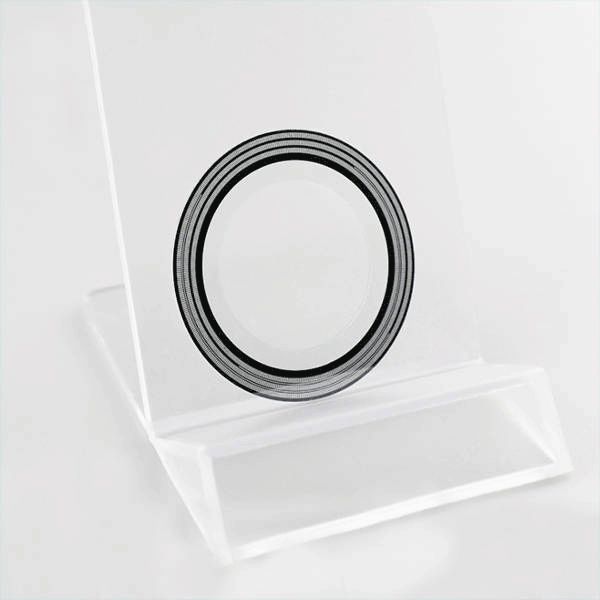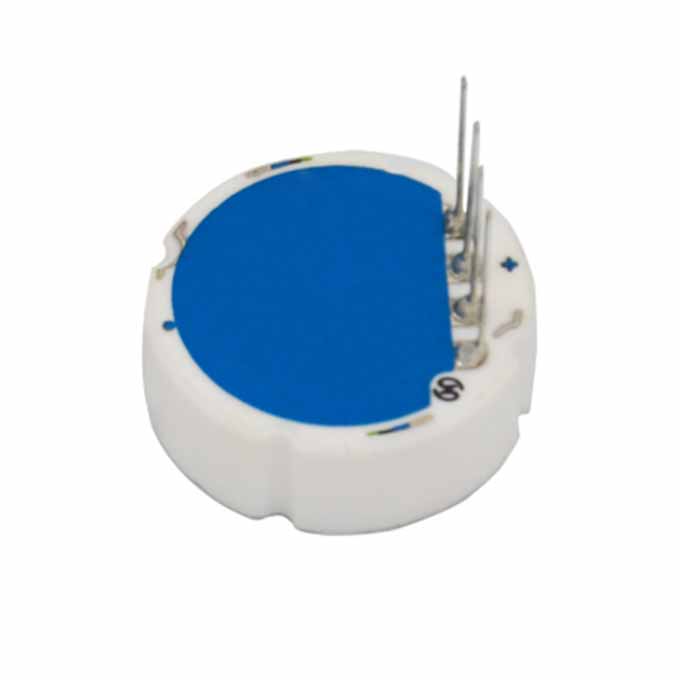Ceramic pressure sensor core
Ceramic pressure sensor core
The corrosion-resistant ceramic pressure sensor has no liquid transmission. The pressure acts directly on the front surface of the ceramic diaphragm, causing the diaphragm to deform slightly. The thick film resistor is printed on the back of the ceramic diaphragm and connected to form a Wheatstone bridge (closed). bridge), due to the piezoresistive effect of the varistor, the bridge generates a highly linear voltage signal proportional to the pressure and also proportional to the excitation voltage. The standard signal is calibrated to 2.0 / 3.0 / 3.3 according to the different pressure ranges mV/V, etc., compatible with strain gauge sensors.

Chinese name: 陶瓷压力传感器芯体
Features: temperature stability and time stability
Compensation temperature: -20~85℃
Components: ceramic ring, ceramic diaphragm and ceramic cover
Through laser calibration, the sensor has high temperature stability and time stability, the sensor has its own temperature compensation -20 ~ 85 ℃, and can be in direct contact with most media.
Basic structure
The ceramic pressure sensor is mainly composed of three parts: ceramic ring, ceramic diaphragm and ceramic cover. As a sensitive elastic body, the ceramic diaphragm is made of 95% AL2O3 porcelain, which is required to be flat, uniform and dense. Its thickness and effective radius depend on the design range. The ceramic ring is formed by hot die casting process at high temperature. High-temperature glass paste is used between the ceramic diaphragm and the ceramic ring, which is fired together by thick film printing and thermal firing technology to form a peripherally supported inductive cup-shaped elastic body, that is, the peripheral fixed part of the ceramic should be formed. Creep-free rigid structure. On the upper surface of the ceramic diaphragm, that is, the bottom of the ceramic cup, the circuit of the sensor is made by thick film technology. The circular groove on the lower part of the ceramic cover forms a certain gap between the cover and the diaphragm, and the limit can prevent the diaphragm from being broken due to excessive bending when overloaded, forming anti-overload protection for the sensor.

Basic Features
Ceramic is recognized as a highly elastic, corrosion-resistant, wear-resistant, shock- and vibration-resistant material. The thermal stability characteristics of ceramics and its thick film resistance can make its working temperature range as high as -40 ~ 135 ℃, and it has high precision and high stability of measurement. The degree of electrical insulation is >2kV, the output signal is strong, and the long-term stability is good. Ceramic sensors with high characteristics and low price will be the development direction of pressure sensors. In Europe and the United States, there is a trend to completely replace other types of sensors. In China, more and more users use ceramic sensors to replace diffused silicon pressure sensors.
Applications
Process control, environmental control, hydraulic and pneumatic equipment, servo valves and drives, chemicals and chemical industry and medical instrumentation and many other fields.
The outstanding features of this ceramic coating are:
(1) It has excellent resistance to high-speed fiber wear, and its service life is 5 times longer than that of chrome-plated parts;
(2) It has a moderate friction force, which can apply a moderate "twist force" to the fiber, so that the fiber can achieve the necessary strength and toughness;
(3) It has a moderate surface roughness, which can enable the fiber to obtain the necessary "fluff", achieve good dyeing performance, and have a certain hygroscopicity.
The discovery of composite oxide superconducting ceramic materials with high critical resistance temperature for high temperature superconductor parts was a major breakthrough in the field of materials in the 1980s.
The unique advantages of plasma sprayed superconducting ceramic coatings are: high deposition rate, easy to prepare thick coatings and large-area coatings, capable of spraying superconducting parts with complex shapes, and can be sprayed directly in the atmosphere without protective gas, It is a promising process for realizing the practical application of superconducting materials. Plasma sprayed yttrium barium copper oxide (YBaCuO) and bismuth strontium calcium copper oxide (BiSrCaCuO) superconducting ceramic coatings have been reported successfully. It has shown good application prospects in magnetic shielding, microwave components, various sensors, quantum electronic devices, etc.

Performance characteristics
Robust ceramic sensitive diaphragm
Zero and full scale laser calibration
Excellent corrosion and wear resistance
Shock and vibration resistance
High precision and high stability
Wide operating temperature range
Small size, easy to package
most competitive price
Technical parameter
Supply voltage: 2~30VDC
Bridge arm resistance: 10k±30%
Measuring range: 0.2MPa~60Mpa
Response time: <1mS
Comprehensive error (including: linearity, hysteresis, repeatability): 0.1~0.15FS%
Zero output: 0±0.5mV/V
Full scale output: 2.0~4.8mV/V
Temperature characteristics (temperature compensation range: -20~85℃): ±0.015 %FS/℃
Stability: <0.2%FSO/year
Working temperature: -40~135℃
Insulation resistance: >2kV


